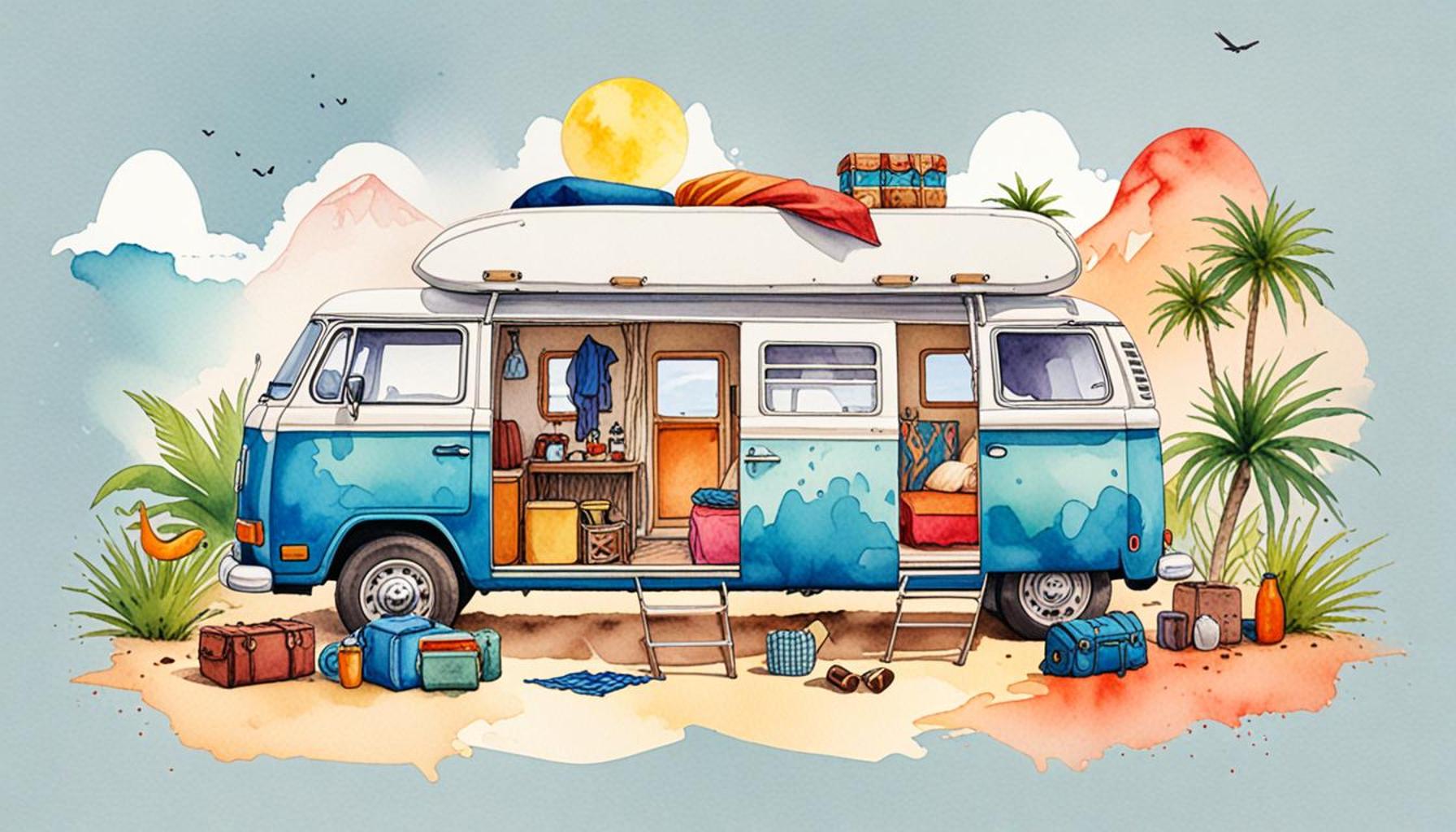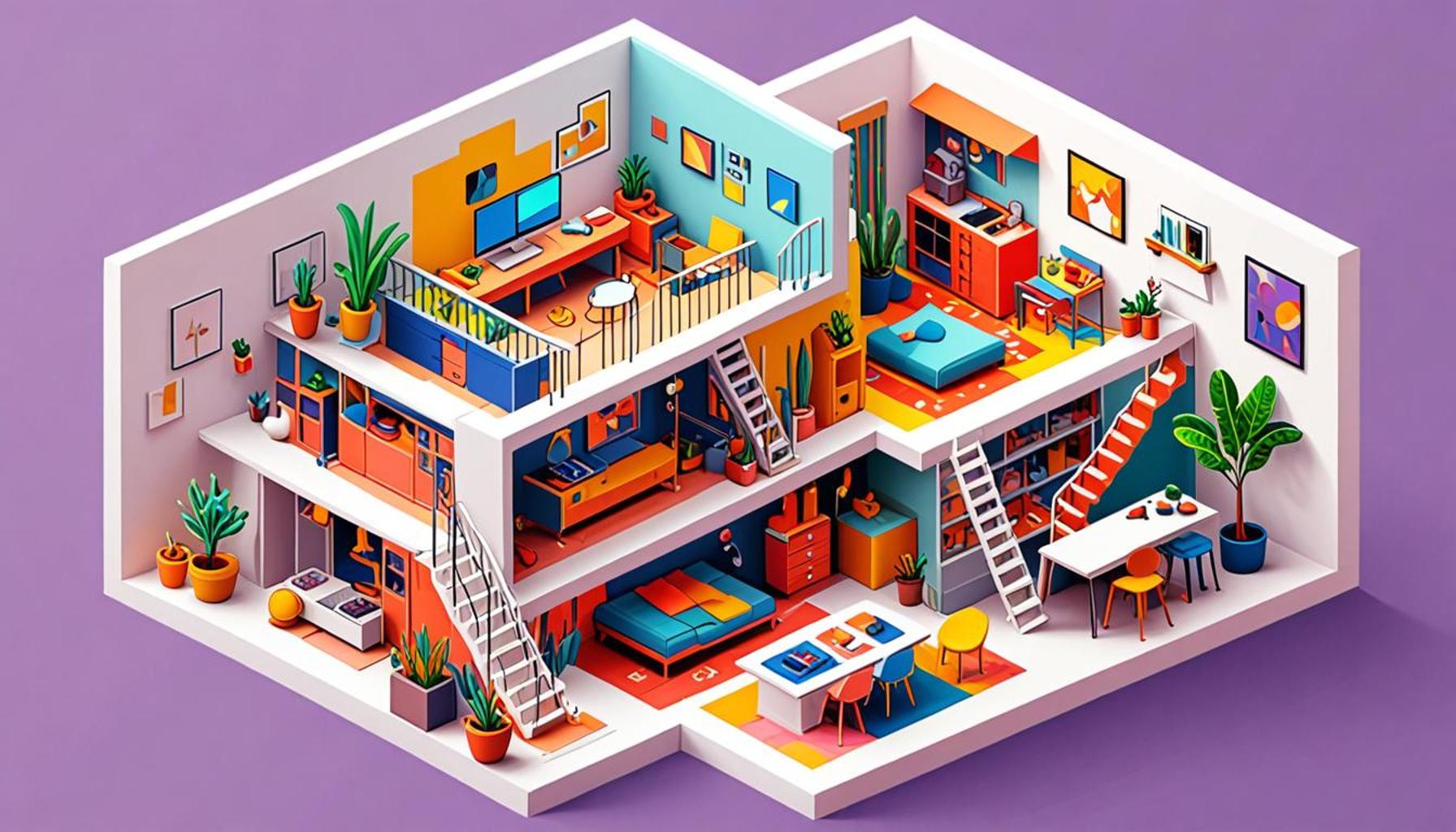Nomadic Lifestyles: How Mobility Influences the Optimization of Personal Spaces

Understanding the Dynamics of Nomadic Living
As the boundaries between work and leisure continue to blur, an increasing number of individuals are discovering the benefits of nomadic lifestyles. This approach to living not only supports geographical mobility but also prioritizes the creation of personal spaces that are both productive and fulfilling. In this exploration, we delve into how mobility reshapes our perceptions of home and the environments we inhabit.
Nomadic living is more than simply being a traveler; it encompasses a unique set of skills and strategies for thriving in diverse locations. Below are vital aspects of this lifestyle:
- Adapting to new environments quickly: Each new place offers unique challenges, from navigating local customs to understanding the climate. Digital nomads often develop an adaptability toolkit that includes researching local cultures beforehand or relying on community networks for support.
- Utilizing multifunctional spaces: Living arrangements must often serve multiple purposes. For instance, a small van might function as a bedroom, office, and kitchen all in one. The rise of co-working spaces makes it easier to blend professional and personal life in any city.
- Embracing minimalism and sustainability: The necessity to downsize fosters a minimalist mindset. Many nomads choose eco-friendly products that cater to their transient lifestyles, such as solar-powered chargers, reusable items, and space-efficient gear.
With the growing number of people adopting nomadic lifestyles, several pertinent questions arise regarding the management of personal assets and the psychological impacts of constant mobility:
- How do mobile individuals manage their belongings? Many choose to keep only essential items, relying on online storage solutions for documents and a minimal wardrobe that is easy to transport.
- What tools and technologies assist in optimizing living arrangements? Applications for itinerary planning, remote work, and financial management help nomads coordinate their lives efficiently. Services like Airbnb and digital banking have made temporary living arrangements possible and practical.
- Are there psychological effects associated with constant relocation? While some find freedom and excitement in mobility, others may struggle with feelings of isolation and the lack of a permanent community. Research indicates that building connections online can mitigate these negative feelings.
Data shows that the rise of remote work, especially amplified by the COVID-19 pandemic, is transforming our understanding of home. The conventional notion of a fixed residence is evolving, leading to innovative living arrangements where the concept of “home” can encompass various locations. As we analyze the implications of this shift, it becomes clear that mobility is a catalyst for change, influencing not only the design of our physical spaces but also how we engage with the world around us.
By recognizing the elements that define contemporary nomadic living, individuals can better navigate the complexities of their choices and enhance their experiences within this dynamic lifestyle. The journey into this world of flexibility and exploration offers invaluable lessons on adaptability, resourcefulness, and sustainability.

DISCOVER MORE: Click here to learn about emotional decluttering
The Art of Minimalism in Mobile Living
One of the most significant shifts instigated by nomadic lifestyles is the art of minimalism. As individuals navigate between diverse environments, they quickly realize that each item they own must serve a specific purpose. The conventional accumulation of belongings gives way to a curated collection of essentials—clothing, technology, and personal effects that provide functionality and comfort. This phenomenon not only reflects a practical approach to living but also fosters a deeper understanding of one’s needs and priorities.
To flourish in various settings, nomads often assess their belongings regularly. This assessment leads to strategic choices about what to keep and what to leave behind. Some of the most common items that contribute to a minimalist nomadic lifestyle include:
- Portable Technology: Laptops, tablets, and smartphones become key tools for maintaining connectivity and productivity. Programs that aid in remote work, such as cloud storage solutions, allow individuals to keep necessary files without burdening physical space.
- Compact and Versatile Clothing: The shift towards capsule wardrobes often embraces eco-friendly fabrics and multifunctional pieces that can be dressed up or down, accommodating various occasions.
- Minimalist Living Gear: Items like compact cooking equipment, lightweight camping gear, and multifunctional furniture have gained popularity. These items are designed to optimize space and provide utility without excess.
The notion of space optimization extends beyond possessions to encompass personal environments. Nomads often engage in a creative reimagining of spaces—whether it be a cozy corner in a co-working space, the interior of a van, or a temporary rental. They focus on how to make any place feel like home, even if only for a short time. Essential to this is the idea of creating inviting atmospheres that reflect personal styles and provide comfort amidst constant change.
Adaptability in organizing these personal spaces also plays a crucial role. Nomadic individuals develop techniques for efficiently setting up and packing their environments. Time management becomes vital as they seek to maximize productivity while also carving out relaxation areas in their living quarters. The intersection of work and leisure demands that every square inch serves dual purposes, whether through innovative furniture design or clever storage solutions.
Furthermore, the nomadic community thrives on shared experiences and resources. Online platforms enable individuals to exchange tips and ideas on efficient living. For example, Facebook groups or forums dedicated to digital nomadism often share hacks for optimizing living spaces, reviewing products that enhance mobility, and discussing local resources—such as laundromats and farmer’s markets—convenient for transient lifestyles.
As mobility becomes a core element of contemporary existence, the nomadic lifestyle teaches us to embrace flexibility and creativity in the spaces we occupy. By distilling our possessions to what truly contributes to our lives, we not only reclaim physical space but also cultivate a more intentional approach to how we live, work, and connect with the world around us.
As we delve deeper into the concept of Nomadic Lifestyles, it becomes apparent that the mobility of individuals profoundly impacts their approach to personal space and organization. The rise of remote work and digital nomadism has paved the way for a reimagined definition of home. No longer do we see personal spaces as fixed locations; rather, they are fluid, adaptable environments that must cater to the dynamic lifestyles of modern nomads.
This optimization manifests itself in various forms, particularly through the integration of multifunctional furniture and modular living spaces. For instance, the shift towards tiny homes and mobile living units allows individuals to live sustainably while maximizing the utility of limited square footage. These compact spaces often incorporate innovative storage solutions, transforming everyday items into dual-purpose tools that maintain a sense of order and efficiency in a changing environment.
Furthermore, this optimization of personal space is heavily influenced by technology. The availability of smart home devices enables nomads to control their environments remotely, ensuring comfort and efficiency regardless of location. This trend also emphasizes the importance of having access to reliable internet connectivity, which not only allows for the management of personal spaces but also fosters community connections and collaboration among like-minded individuals.
Another significant aspect of nomadic lifestyles is the emphasis on aesthetics and personalization. As individuals travel across different regions, they tend to curate their belongings to reflect both their journey and identity. This ever-evolving collection of items fosters a sense of belonging and emotional connection to the spaces they inhabit, regardless of how temporary they may be.
| Category | Key Features |
|---|---|
| Mobility Impact | Encourages flexible and adaptive personal spaces |
| Innovative Living Solutions | Integration of multifunctional furniture and smart tech |
As a direct consequence, this evolving lifestyle reflects a shifting paradigm in the way we perceive home. Spaces become not just a physical location, but an experience enriched by mobility and adaptation. Exploring these themes, from integrating technology to evolving design choices, reveals the potential that arises when we embrace the nomadic spirit and its influence on personal spaces.
DISCOVER MORE: Click here to learn how
Health and Wellness in Transit
Maintaining health and wellness is a pivotal consideration for those embracing nomadic lifestyles. The constant movement between various locations often challenges individuals to prioritize their physical and mental well-being, necessitating innovative approaches to self-care that are tailored to a mobile life. As urban environments can differ dramatically in amenities and resources, understanding how to maximize well-being while on the go becomes essential.
One popular method for integrating fitness into nomadic living is through portable exercise solutions. Compact gear such as resistance bands, travel yoga mats, and even foldable bicycles allow individuals to engage in workouts regardless of their location. These tools not only contribute to physical health but also serve as a means of creating a routine. Engaging in familiar exercises provides a grounding moment amidst the chaos of moving.
Nutrition is another facet where mobility significantly impacts personal space optimization. Cooking in small quarters, such as camper vans or hostel kitchens, demands strategic planning and creativity. Many nomadic individuals now adopt meal-prepping techniques to ensure they have healthy options available. Utilizing multi-functional cookware, or investing in items like a compact blender or an electric kettle, helps prepare nutritious meals with limited resources. Moreover, local farmer’s markets and grocery co-ops present opportunities to not only source fresh ingredients but also meet other like-minded individuals within the community.
The Digital Nomad: Integrating Work and Lifestyle
The emergence of the digital nomad culture has redefined the workspace by blending professional life with travel. As more individuals transition to remote work, they seek to create productive environments within transient living spaces. Tools such as ergonomic laptop stands, portable desks, and noise-canceling headphones have emerged as essentials, allowing professionals to maintain focus during work hours while adapting to varying surroundings.
Many nomads also harness shared workspaces, which have proliferated across major cities. These environments not only offer a structured place to work but also facilitate networking opportunities with fellow travelers and entrepreneurs. The social aspect of co-working can combat feelings of isolation often experienced on the road, enhancing mental well-being.
Cultural Engagement and Personal Spaces
Engaging with local cultures also influences how nomads perceive and optimize their personal spaces. Frequent exposure to diverse lifestyles encourages them to adopt new practices and ideas that enhance their living experience. For instance, a nomad living in a co-housing community in Portland might implement communal cooking habits that encourage social interaction while optimizing kitchen resources. Similarly, immersing in local traditions can inspire the rearrangement of personal items to reflect cultural appreciation, thus transforming shared spaces into personalized havens in each new environment.
Lastly, the concept of community building has grown in importance among nomadic individuals. Utilizing social media platforms, they create localized networks for exchanging information about the best living arrangements, local activities, and health initiatives. The rise of forums and community organizations fosters relationships among nomads, providing a support system that emphasizes collaboration, resource sharing, and emotional support—key components of wellness during periods of transition.
Ultimately, the way mobility influences the optimization of personal spaces speaks to the adaptability and resilience required by those living in constant flux. Understanding and embracing these dynamics allow nomads to craft their lived experience, balancing health, productivity, and cultural engagement while fostering a profound sense of connection—both with themselves and the world around them.
DISCOVER MORE: Click here to learn how decluttering can enhance your life
Conclusion
In conclusion, the exploration of nomadic lifestyles reveals the profound impact of mobility on how individuals optimize their personal spaces. As people navigate various environments, they must adapt their routines—be it through innovative fitness strategies, creative cooking methods, or establishing productive workspaces that can shift with each new destination. The challenges of living on the move necessitate a thoughtful approach to health and wellness, with nomads adopting portable solutions that fit their dynamic lifestyles.
Moreover, the integration of local cultures enriches the nomadic experience, as individuals learn to rearrange their personal items and practices in ways that honor and reflect their surroundings. This cultural engagement not only enhances living arrangements but also fosters deeper connections with communities, turning transient houses into personalized homes.
As remote work continues to rise, the digital nomad movement further exemplifies the evolving concept of space and belonging. By cultivating both virtual and physical networks, nomads are redefining what it means to work and thrive in a global society. Ultimately, embracing the fluidity of mobility compels individuals to establish routines that promote well-being while forging lasting relationships.
Therefore, understanding the intricacies of mobility in personal space optimization offers valuable insights into resilience and adaptability—qualities essential for anyone embracing a nomadic path. As more people consider the possibilities of a life on the move, the lessons gleaned from those who have already ventured into this lifestyle can serve as a beacon of guidance for those eager to explore a world filled with diverse experiences.


